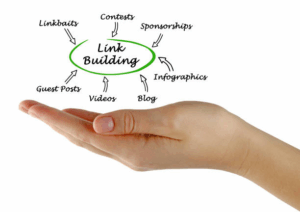 Just because your company doesn’t sell products online, or have any interest in e-commerce, doesn’t mean that you don’t need digital marketing. Statistics don’t lie: 54% of Americans have substituted the Internet and local search for phone books (comScore), and a startling 95% of smartphone users have looked for local information (Source: The Mobile Movement Study, Google/Ipsos OTX MediaCT , Apr 2011). So how do you use digital marketing to your business’ advantage?
Just because your company doesn’t sell products online, or have any interest in e-commerce, doesn’t mean that you don’t need digital marketing. Statistics don’t lie: 54% of Americans have substituted the Internet and local search for phone books (comScore), and a startling 95% of smartphone users have looked for local information (Source: The Mobile Movement Study, Google/Ipsos OTX MediaCT , Apr 2011). So how do you use digital marketing to your business’ advantage?
- Get your primary audience’s attention. There are a number of ways to accomplish the goal, but the first step in the process is to follow the first rule of marketing: know your audience. Who do you sell to? Who is looking for your product? Once you have that key piece of information, invest your marketing budget and efforts into digital marketing tools that work (and marketing experts recommend): search engine optimization, content marketing and social media marketing. Contact a company that specializes in local search engine optimization (SEO) and can use their technology to get you in the top search engine rankings on Google, Yahoo and Bing in surrounding areas. They can create information that your audience wants and use their knowledge of conversion rates to turn them into customers. In addition, they can find social media platforms where your audience is at and create content for your website that they want to click on. The result: a multi-channel digital marketing strategy designed to get your audience’s attention, build trust and convert them to customers (and is far more affordable than you would think!).
- Create great headlines. All great website and content marketing headlines have a commonality: they speak to your audience. Whether that is through an attention-grabbing headline (e.g. 5 things you’re doing wrong) or a title that speaks to their pain point or entertains them. Common examples of good headlines include:
- Questions (How can I fix this?)
- List (5 Ways to fix your problem)
- Shocking (5 Horrible Mistakes You’re Making Fixing Your Problem)
- What’s not a good headline? A title that tricks the user and doesn’t deliver. Don’t produce a headline to get their attention, or uses all the key words that your audience is looking for, and doesn’t deliver any value. Remember, the best way to sell to a customer is to build their trust. Misleading them has the opposite effect.
- Use different media and visuals. Don’t use a one-size-fits-all mentality when planning and selecting visuals for your digital marketing efforts. Create videos and graphics for every different preference, or purchase them. Use them on your social media channels, on your website and in your content marketing channels for maximum impact.
- Craft a strong call-to-action (CTA). The definition of a CTA is not always about a purchase. A call-to-action can be a graphic, asking your audience to contact you with questions (remember you want to build trust) or inviting their input (about a product, a funny picture, anything). Whether writing a draft for new page on your website or writing a post for your blog, don’t forget to include a CTA.
- Keep testing. A website is not a static animal to be published and left for 5-10 years. Rather, evolve your website, social media, content marketing and digital sales tactics to fit your customers’ needs (remember they come first) and improve their buying experience. That’s what so great about online marketing: it changes and morphs with the world (think about the impact of mobile devices on digital marketing). Your job, as a B2C or B2B company—remember it’s all about marketing to humans!—is to grow with it.
If you don’t have the time, or resources internally, to take on these digital marketing channels, outsource. We’ve said it before: there’s not shame or blame in outsourcing. Rather, it allows you to focus your efforts on what you’re good at (like running your company) and puts your digital marketing efforts into the experts’ hands. Experts who have the expertise and knowledge of evolving digital marketing trends and can convert them into local sales. It’s a partnership with great results, and a great return on your investment.



